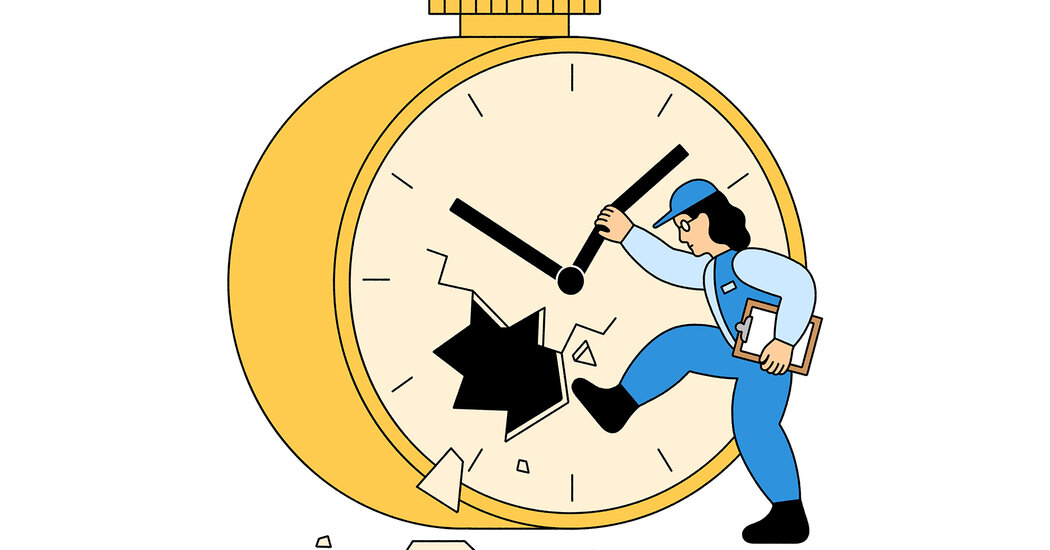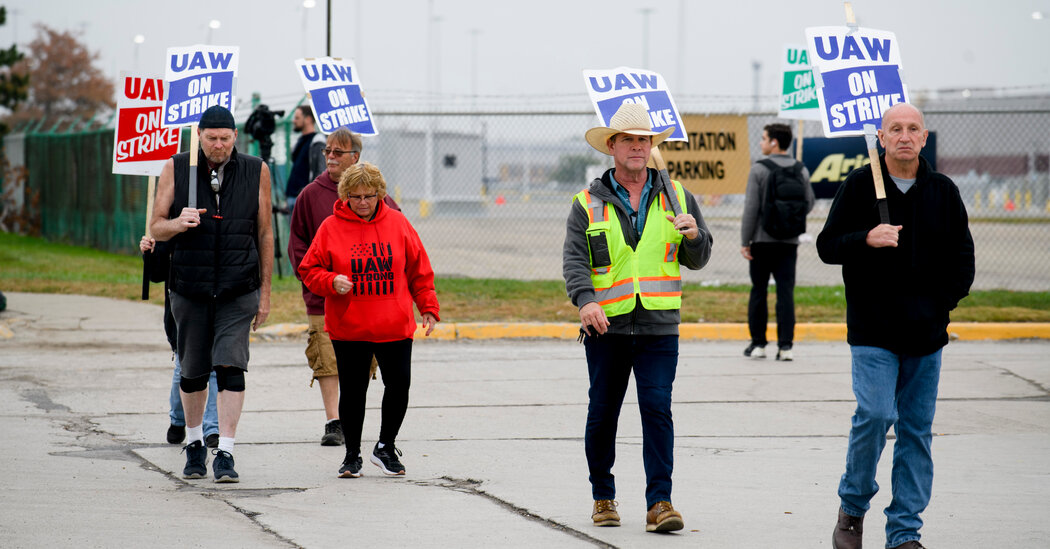Why Pharmacy Workers at CVS and Walgreens Are Protesting
Some pharmacy workers are calling in sick or walking off the job this week to protest what they call inadequate staffing and increasing work requirements that are making it harder for them to safely fill prescriptions and administer vaccines, according to protest organizers.
The protests by nonunion workers, called Pharmageddon on social media, are affecting some CVS and Walgreens locations, according to organizers and workers. They are happening during a period of increasing labor activism by workers in other sectors, including the auto industry and Hollywood.
Bled Tanoe, a pharmacist in Oklahoma City who used to work for Walgreens and now works for a hospital, said she was helping to spread the word about the walkouts because she was concerned that pharmacy chains had been telling workers for years to “work faster and work with less help.”
“Pharmacies are not OK,” Ms. Tanoe said. “Your local Walgreens and CVS and Rite Aid is not OK. It’s a soup of danger, with ingredients from companies who have lost the core belief of what we do, which is patient care and patient focus.”
How many workers are walking out?
Without a union to coordinate the collective action, it is “hard to say” how widespread the protests are and how many workers are calling in sick or walking out, said Shane Jerominski, a former Walgreens pharmacist in Southern California who has been coordinating the protests on his Facebook page, The Accidental Pharmacist.
On Monday, the first of what were planned to be three days of walkouts, Mr. Jerominski said that “thousands of stores were understaffed” and 25 pharmacies closed in 15 states, including New York, Pennsylvania, Connecticut, Florida, Texas and Illinois.
But Walgreens said in a statement on Tuesday that, since Monday, it had seen “only three pharmacies out of nearly 9,000 close to due to work force disruption and no more than a handful of pharmacists walk out.”
CVS said in a statement on Tuesday that it was “serving patients across our footprint today, and we’re not seeing any unusual activity regarding unplanned pharmacy closures or pharmacist walkouts.”
And Rite Aid said that it was “unaware of plans by our pharmacists to participate in this activity.”
The protest is being organized on social media.
Mr. Jerominski said that workers had organized on Facebook and Reddit, rallying around demands for more staffing as well as better pay and guaranteed hours for pharmacy technicians.
Many were inspired, he said, by about two dozen CVS pharmacists who walked off the job in the Kansas City, Mo., area in September over concerns about staffing and stressful working conditions.
The American Pharmacists Association said in a statement supporting the walkouts that pharmacists had contended for years with “workplace issues, leading to frustrations and burnout, affecting your mental health and well-being.”
The association blamed, among other factors, quotas on the number of prescriptions filled per hour and vaccines administered per day.
What do workers say?
Nathan Fuller, 34, a pharmacist at a Walgreens in Thornton, Colo., said he called in sick on Monday and Tuesday to protest a lack of adequate staffing to handle prescriptions and vaccines, which he said was jeopardizing patient safety.
Walgreens increased the scheduling of vaccines last year, allowing patients to double- and triple-book the same time slot, Mr. Fuller said. The technicians who administer vaccines could not keep up, and several said, “‘Enough is enough’ and just walked out of the pharmacy,” Mr. Fuller said.
“People were crying, people were broken down,” Mr. Fuller said. He said he met with Walgreens leaders to emphasize the need for more staffing or flexibility in scheduling vaccines, but was told, “This is happening, whether you staff it or not.”
He said he was concerned that when employees were stretched thin, “the public is the one often suffering.”
“We have people with burnout, dealing with exhaustion and emotional distress and mental health issues, and that can lead to unsafe environments for people doing jobs that require a lot of attention to detail,” Mr. Fuller said.
Christine Settie, 64, said she quit her job last week as a pharmacy technician at a CVS in Waynesburg, Pa., because “I just feel like they did not appreciate their employees.”
Ms. Settie said she was earning $18.19 an hour, which she called “pitiful,” after 39 years on the job.
She handled the drive-through window, the front counter and the phones, and also counted pills. She was often the only worker other than the pharmacist on duty, she said.
CVS, she said, cut her hours to 30 a week from 40, forcing her to get a second job as a private nurse for a family to help her pay the bills.
Rebecca Kolins Givan, an associate professor of labor studies and employment relations at Rutgers University, said that such concerns were not limited to workers at chain pharmacies.
“It’s a symptom of what we see in lots of areas of health care, which is that various kinds of health care providers are motivated by profit and revenue, and if they can squeeze staff costs, they do,” Professor Givan said.
“You see this in nursing, as well,” she said. “Staffing shortages really get into a vicious cycle where the more short-staffed you are, the harder it is to do the job properly, and that makes more staff frustrated and demoralized and likely to leave.”
What do the pharmacies say?
CVS said it was “committed to providing access to consistent, safe, high-quality health care to the patients and communities we serve and are engaging in a continuous two-way dialogue with our pharmacists to directly address any concerns they have.”
The company added, “In response to recent feedback from our pharmacy teams, we’re making targeted investments to address their key concerns, including enabling teams to schedule additional support as needed, enhancing pharmacist and technician recruitment and hiring, and strengthening pharmacy technician training.”
Walgreens said, “We recognize the incredible work our pharmacists do every day, especially this time of year when there is increased demand for their services across communities.”
It added: “We have taken steps over the last two years to improve pharmacists’ experience, advance the profession and enable them to provide the high-value care they were trained to do.”
Rite Aid said, “We believe that our efforts in recent years and months to improve work/life balance and working conditions for our pharmacists is evidence of our commitment to the team.”


